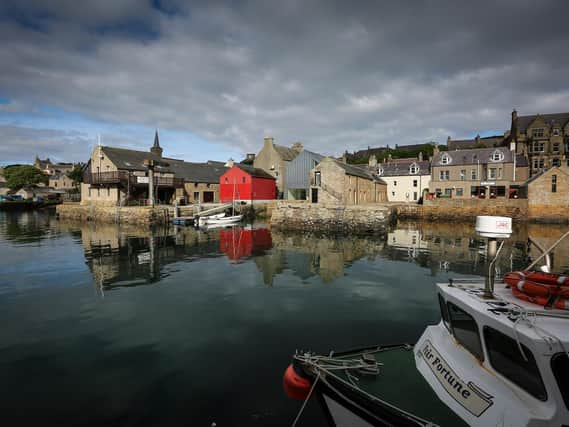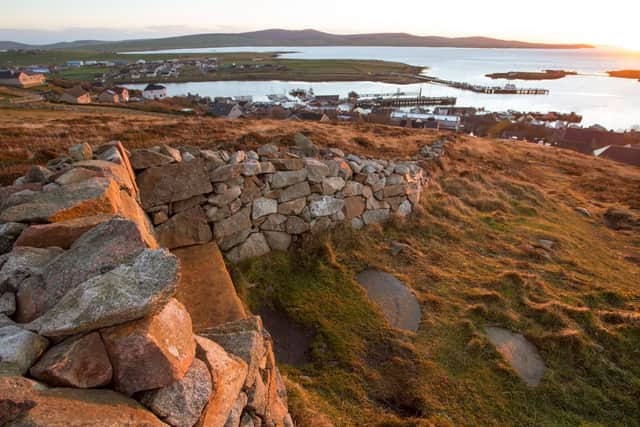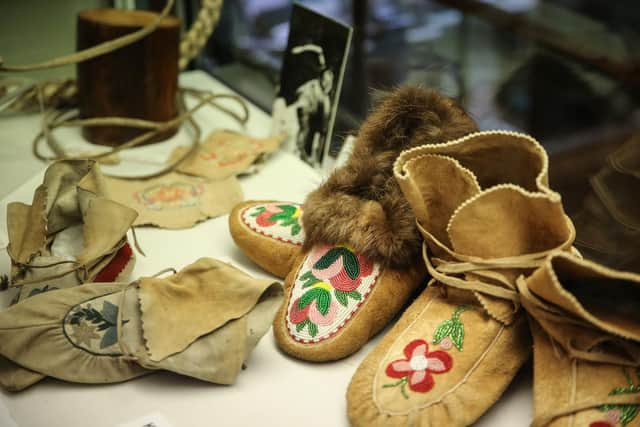Immerse yourself in Orkney’s rich heritage


For it is this town that launched discovery after discovery, adventure after adventure, and took the deep vision of many of its residents to the world.
For a small town, it is a place that through time has had some big ideas. Even Kirkwall once tried to quell its rising ambition, with the capital trying to tax merchants of Stromness, which it described long ago as an “upstart village”.
Today, Stromness Harbour remains the heartbeat of the town, the boats loaded with crabs, lobsters and whelks drifting in and out from dawn until dusk.


Also coming and going are the divers who come to search the wrecks of the German Navy, which were scuttled and destroyed in a great show on the calm waters of Scapa Flow following the Armistice of World War I, one hundred years ago.
It is these sheltered seas, which are cupped by Stromness and a string of small neighbouring islands on the edge of The Atlantic, that helped put the town on the map.
Seafaring merchants, buoyed by new global trade opportunities in the 16th Century, were drawn to Stromness – then known as Hamnavoe, the Norse for peaceful harbour – for rest and restoration before heading west past the island of Hoy into the deep ocean.
A visitor in the 16th Century noted: “The French and Spanish very often avoid storms here. No wind can harm ships here.”


Two hundred years later and Stromness was booming as European nations were locked into a series of wars that saw the English Channel awash with warships and privateers.
As merchants started to favour the less perilous northern route to the Atlantic, Stromness became the place to drop anchor with the harbourside becoming crowded with sailors and traders. Business in the shops, inns and alehouses was brisk and plentiful.
It is this era that can be felt walking through the historic town centre today, where the tight pretty flagstone streets are shared by pedestrians and slow-moving cars that find a natural order with little fuss.
Stromness moves at its own gentle, pleasant pace.
Charming closes and passageways – one tantalisingly called the Khyber Pass – lead off the main route through the town, either winding up towards Brinkie’s Brae or down to the water’s edge, where harbourside houses and their jetties and piers bring land and water seamlessly together.
A stop at Login’s Well helps to further bring Stromness’s rich history to life. Now covered in glass, this understated treasure is where the ships of the Hudson’s Bay Company drew water for more than 200 years.
The company had a huge impact on the town. It attracted hundreds of its men to join mass hunting expeditions to Rupert’s Land around Hudson Bay in Canada, with the fur bearing animals of the Arctic Circle the lucrative catch of the time.
By 1800, 418 of the 524 employees of the HBC were Orcadians, these fit, hardy men making good workers in the toughest of terrains.
Close to Login’s Well, you will find The Haven in Alfred Street, the home of the first HBC Agent Colonel David Geddes, where men signed up for these often perilous voyages.
The agency was later taken over by John Rae senior, the father of Arctic explorer John Rae.
The young Rae was one of the many men to sign up to work for HBC. A medical graduate, he joined the company as a surgeon, treating European and indigenous employees at Moose Factory, Ontario, for more than 10 years.
He was respected for his stamina and ability to survive on the move with very little equipment. His ability to cover vast distances in snowshoes was legendary.
A statue to Rae can also be found close to Stromness Harbour. He is remembered for finding evidence of the fate of Sir John Franklin’s lost expedition to The Arctic.
The expedition disappeared after leaving England in 1845 to search for the Northwest Passage – a navigable Arctic route from the Atlantic Ocean to the Pacific.
Franklin’s last landfall was Stromness, and the expedition spent three days here before heading to the Arctic and disappearing. It was at Login’s Well, that Franklin and his men took their last water before heading west on their tragic journey, which cost the lives of 129 men.
At Stromness Museum, the town’s key role in this age of exploration is well told. You’ll find smoking pipes, bags and moccasins brought back to Stromness by those working for HBC, their arrival home in June a great festive occasion in the town with a cannon fired at the harbour, which can still be found today, signalling their safe return.
Artefacts drawn from the Pacific Isles and Africa that were brought back to Stromness by sailors and adventurers over the centuries also speak of many departures and returns from the town.
The museum also has an excellent display to mark the centenary of the Scapa Flow scuttlings, with that story told by items recovered from the wrecks at the bottom of the sea.
Stromness sits at ease with its seafaring and military history but the arts has also played a big part in its evolving identity.
Just across from the museum, you’ll find Mayburn Court, the home of Orkney’s poet and storyteller George Mackay Brown.
His former home stands on the site of Stromness Distillery, which produced a popular single malt called Old Orkney until it closed in 1928, when Stromness became a ‘dry’ town until after World War II. The first pub did not open again until 1948.
The Pier Arts Centre is a true gem of Stromness, with the gallery bringing world class British contemporary art and design to the islands and is formed around the collection of political activist and arts patron Margaret Gardiner.
The building itself, a former office for the Hudson Bay Company, is an impressive space that juts low into the bay, the shore lapping close to its door. It brings the past, present and future of Stromness beautifully together in an elegant expression of this impressive and charming place.
Download Destination Orkney’s new Stromness itinerary and start planning your adventure today. Click here.